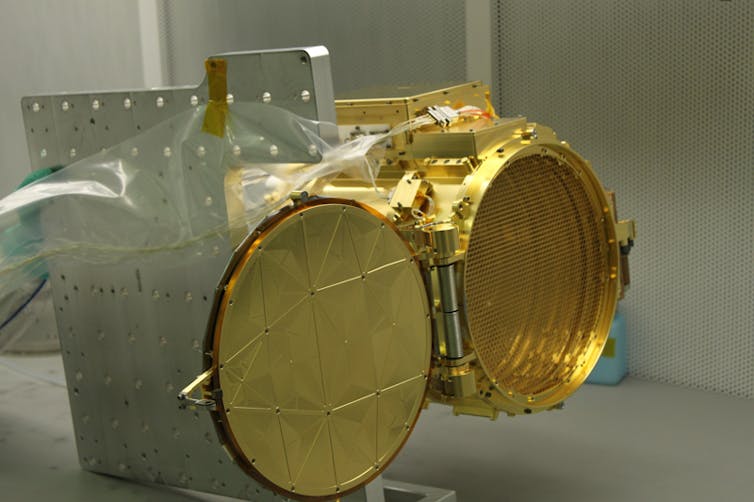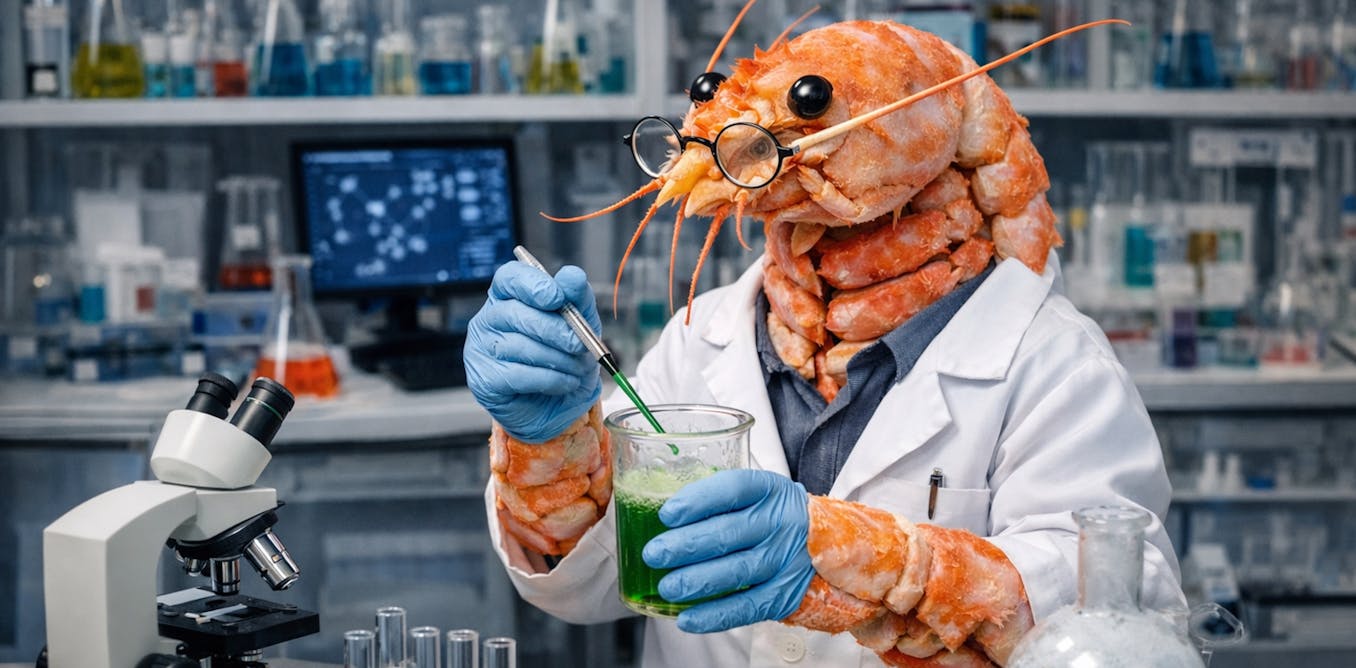Europa is one of the largest of more than 90 moons in orbit around the planet Jupiter. It is also one of the best places to look for alien life.
Often termed an “ocean world” by scientists, observations to date strongly suggest that beneath Europa’s icy crust, there could be a liquid saltwater ocean containing twice as much water as Earth’s oceans. Now, Nasa’s Europa Clipper – the largest spacecraft ever developed by the US space agency for a planetary mission – may have the tools to detect it.
As the Clipper spacecraft undergoes final testing and preparations before its October 2024 launch, scientists using one of the nine instruments onboard have made an exciting discovery. As well as determining whether Europa could support life, the instrument in question should in fact be capable of directly detecting alien life itself – should it exist there.
The three key ingredients for life are energy, liquid water and the right chemicals. The spacecraft will provide more detail on these ingredients at Europa, and therefore its potential for hosting life.
Europa gets energy from the extreme tidal forces caused by Jupiter’s gravity, which push and pull the material of the moon, generating heat within it. It is this process that supports the theory of a liquid water ocean beneath the surface.
Europa’s extraterrestrial ocean might contain the chemical building blocks for life. These include chemical elements such as carbon, oxygen, phosphorus and sulphur. But the mission team will also be on the lookout for organic compounds, which contain carbon and comprise many of the more complex chemicals vital in biology.
Detecting the signatures of these chemicals is the key goal of the Europa Clipper mission. If such evidence can be found, this would indicate that Europa may be another place in the solar system capable of supporting life.
A serendipitous finding
The Suda (Surface Dust Mass Analyser) instrument, led by the University of Colorado Boulder, is one of nine instruments on Europa Clipper. It will collect tiny ice grains and dust from the region above the surface as the spacecraft flies by the moon. The primary objective is to determine the composition of this material, and by analysing the trajectory, find out where on Europa’s surface it originated.
Scientists believe that some icy material may come from eruptions, or plumes, on Europa’s surface. These plumes could carry water from the ocean below into space, so analysing what this material is composed of will give a good indication of the habitability of the ocean. The Suda instrument will also be able to determine whether material has originated from Europa itself, or has come from another nearby solar system object – such as another moon of Jupiter.
Nasa/JPL-Caltech/Seti Institute
Speaking before the latest findings, Murthy Gudipati, a planetary scientist at Nasa’s Jet Propulsion Laboratory, said: “We are not a life-finding mission. Europa Clipper’s goal is to understand Europa’s ocean and the moon’s habitability.”
But recent research published in Science Advances has shown that Clipper could be a life-finding mission after all. A group of scientists (from the University of Washington, the Free University of Berlin and the UK’s Open University) tested an impact ionising mass spectrometer, the same type of instrument as Suda, in the lab under simulated conditions similar to those expected during the Europa mission.
In the tiny ice crystals fired towards the equipment, the scientists also included some bacterial cell material. They found that even when just 1% of a cell’s complete material was included in an ice grain, they could still detect the presence of bacterial material. They were also able to determine that different modes of the instrument were better for detecting different organic compounds, such as fatty acids and amino acids.
Fabian Klenner, one of the researchers, told New Scientist: “If life forms on Europa follow the same principle of having a membrane and DNA made from amino acids … then detecting those chemicals would be a smoking gun for life there.”

Nasa/Lasp-CU Boulder
The Suda science team will use these findings to analyse the data from Europa when it arrives. They have a little while to get things ready: the spacecraft won’t arrive at Europa until at least 2030.
It would be a sufficiently fantastic result if Clipper can demonstrate that Europa has the necessary ingredients for life, and would undoubtedly lead to much research and speculation, as well as possible preparations for a follow-up mission to detect potential life. If Clipper can do all that, plus gather direct material from alien life at the same time, it would be a landmark scientific discovery.
To date, no concrete evidence has been found of life beyond Earth, though there are indications of suitable conditions on some other solar system bodies. Life on Europa would be the first extraterrestrial biology ever conclusively detected. While this life is not likely to communicate with us any time soon, it would answer the burning question of whether biology can exist anywhere other than Earth.
Proving that Europa supports or has supported life will enable researchers to develop and test theories on how that biology came to be. This in turn could also provide insights into the origins of life on our planet.

The post “If life exists on Jupiter’s moon Europa, scientists might soon be able to detect it” by Lucinda King, Space Projects Manager & Mission Design Lead, University of Portsmouth was published on 04/05/2024 by theconversation.com


























